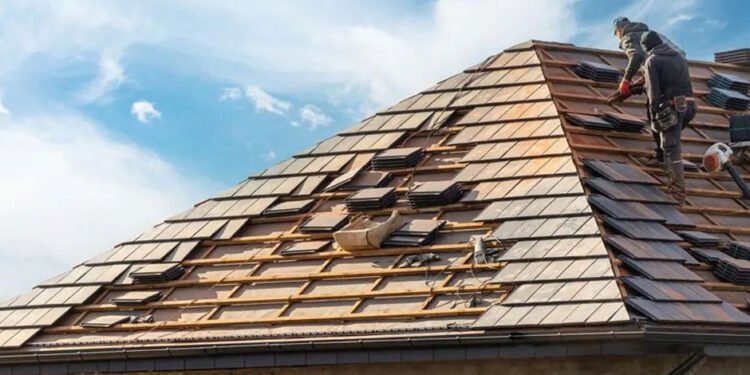Replacing a roof is a significant home improvement project that comes with a substantial financial commitment. Knowing what to expect can help you make informed decisions and avoid unnecessary expenses. In this article, we will break down the costs associated with roof replacement, covering everything from material options to finding the right contractor. Let’s dive into what every homeowner needs to know.
Factors Influencing Roof Replacement Costs
The cost of replacing a roof depends on several factors. The type of roofing material you choose is one of the most significant determinants. Asphalt shingles, metal roofing, and tile are common options, each with its price range. The size and pitch of your roof also play a crucial role in the overall cost. Steeper and larger roofs require more materials and labor, driving up the price.
Additionally, local labor costs and regulations can affect pricing.
Some regions have higher labor rates, and certain areas might require specific permits and inspections, adding to the overall expense. Don’t forget about the cost of removing the old roofing material and disposing of it properly. This step is often overlooked but can add a significant amount to your budget.
Material Options and Their Costs
When it comes to roofing materials, homeowners have several choices, each with its cost implications and benefits.
Asphalt Shingles
Asphalt shingles are the most popular roofing material due to their affordability and ease of installation. They typically cost between $1.50 and $5.50 per square foot. However, they have a shorter lifespan compared to other materials, usually lasting 15 to 30 years.
Metal Roofing
Metal roofing is gaining popularity for its durability and energy efficiency. The cost ranges from $5.00 to $12.00 per square foot. Working with a specialized metal roofing company can provide you with detailed estimates and help you understand the benefits of this material. Metal roofs can last 40 to 70 years, offering long-term savings despite the higher initial cost.
Tile Roofing
Tile roofing, made from clay or concrete, is another durable option. It costs between $7.00 and $15.00 per square foot. Tiles are known for their aesthetic appeal and longevity, often lasting over 50 years. However, they are heavier and may require additional structural support.
Wood Shakes
Wood shakes provide a natural look but come at a higher price, ranging from $6.00 to $9.00 per square foot. They require more maintenance and have a shorter lifespan, typically 20 to 40 years.
The Role of a Roofing Company
Choosing the right material is crucial, and metal roofing offers many benefits. A reputable metal roofing company can help you navigate the costs and advantages. These companies specialize in metal roofing installations, ensuring you get the most out of your investment. They provide precise estimates, quality materials, and professional installation, making the process smoother and more efficient. Plus, they can guide you on the long-term savings and durability of metal roofs, which can withstand harsh weather conditions better than many other materials.
Budgeting for Roof Replacement
Budgeting for a roof replacement can be daunting, but with the right approach, you can manage the costs effectively. Start by getting multiple estimates from different contractors to understand the price range. Set aside a contingency fund to cover unexpected expenses, such as hidden damage discovered during the project.
Financing options are available, from home improvement loans to personal loans. Some states offer tax credits for using energy-efficient roofing materials, which can help offset the costs. Planning your budget carefully will prevent financial strain and ensure a smooth replacement process.
Hiring the Right Contractor
Finding a reputable roofing contractor is essential for a successful roof replacement. Start by asking for recommendations from friends and family. Check online reviews and ratings to shortlist potential contractors. Once you have a list, ask them key questions about their experience, licensing, insurance, and warranties they offer.
Don’t hesitate to request references and follow up with past clients to gauge their satisfaction. A trustworthy contractor will be transparent about costs, timelines, and potential challenges. Taking these steps ensures you hire a professional who will deliver quality work.
Cost-Saving Tips for Roof Replacement
Replacing a roof is a significant investment, but there are ways to save money without compromising quality. Timing your project for the off-peak season, typically in late winter or early spring, can result in lower labor costs. Contractors are often less busy during these times and may offer discounts.
Consider partial replacements if only a section of your roof is damaged. This approach can be more cost-effective than a full replacement. Additionally, investing in energy-efficient roofing materials can lead to long-term savings on your energy bills. Look for materials with high insulation properties and reflectivity to reduce heating and cooling costs.
Understanding Warranties and Insurance
When investing in a new roof, understanding warranties and insurance coverage is crucial. Roofing warranties typically cover materials and workmanship. Material warranties can last anywhere from 20 years to a lifetime, depending on the product. Workmanship warranties, provided by the contractor, usually range from 1 to 10 years.
Review your homeowner’s insurance policy to see if it covers roof replacement due to damage from storms, fire, or other disasters. Proper documentation and compliance with insurance requirements are essential for filing a successful claim. Ensure your contractor provides detailed invoices and receipts to support your claim.
Conclusion
Replacing your roof is a significant home improvement project that requires careful planning and budgeting. Understanding the costs involved, from materials to labor, helps you make informed decisions and avoid unexpected expenses. Consult with professionals, get multiple estimates, and choose the right contractor to ensure a successful roof replacement.
Remember, investing in a quality roof not only protects your home but also enhances its value and curb appeal. By following the tips outlined in this article, you can navigate the roof replacement process with confidence and peace of mind.












